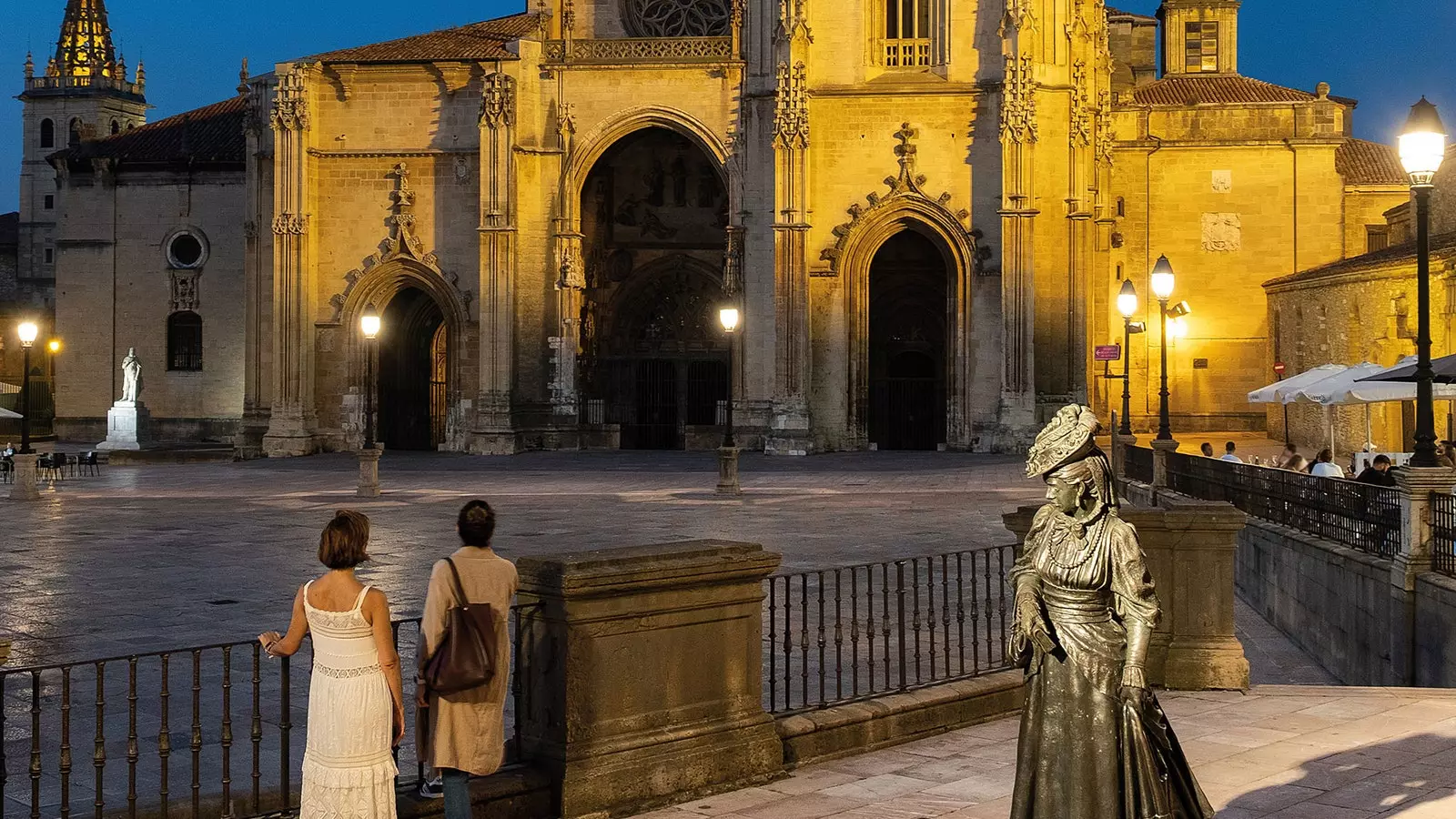
Oviedo Cathedral Square with La Regenta
Oviedo , located in the center of the paradise that is Asturias, has good access both to the sea and to the mountains , and also has admirable natural spaces within the 185 square kilometers that make up the council . A good example are the Meanders of the Nora, a natural monument located between the Councils of Oviedo and Las Regueras that extols the simple beauty of the Asturian landscapes and that can be discovered by doing the Priañes Route , a circular walk of eight kilometers, easy and ideal to do with the family . During the tour you can appreciate the uniqueness of this river system from the viewpoint, in addition to enjoying the views of the Sierra del Aramo , and the beauty of the remains of the Gubín medieval bridge.
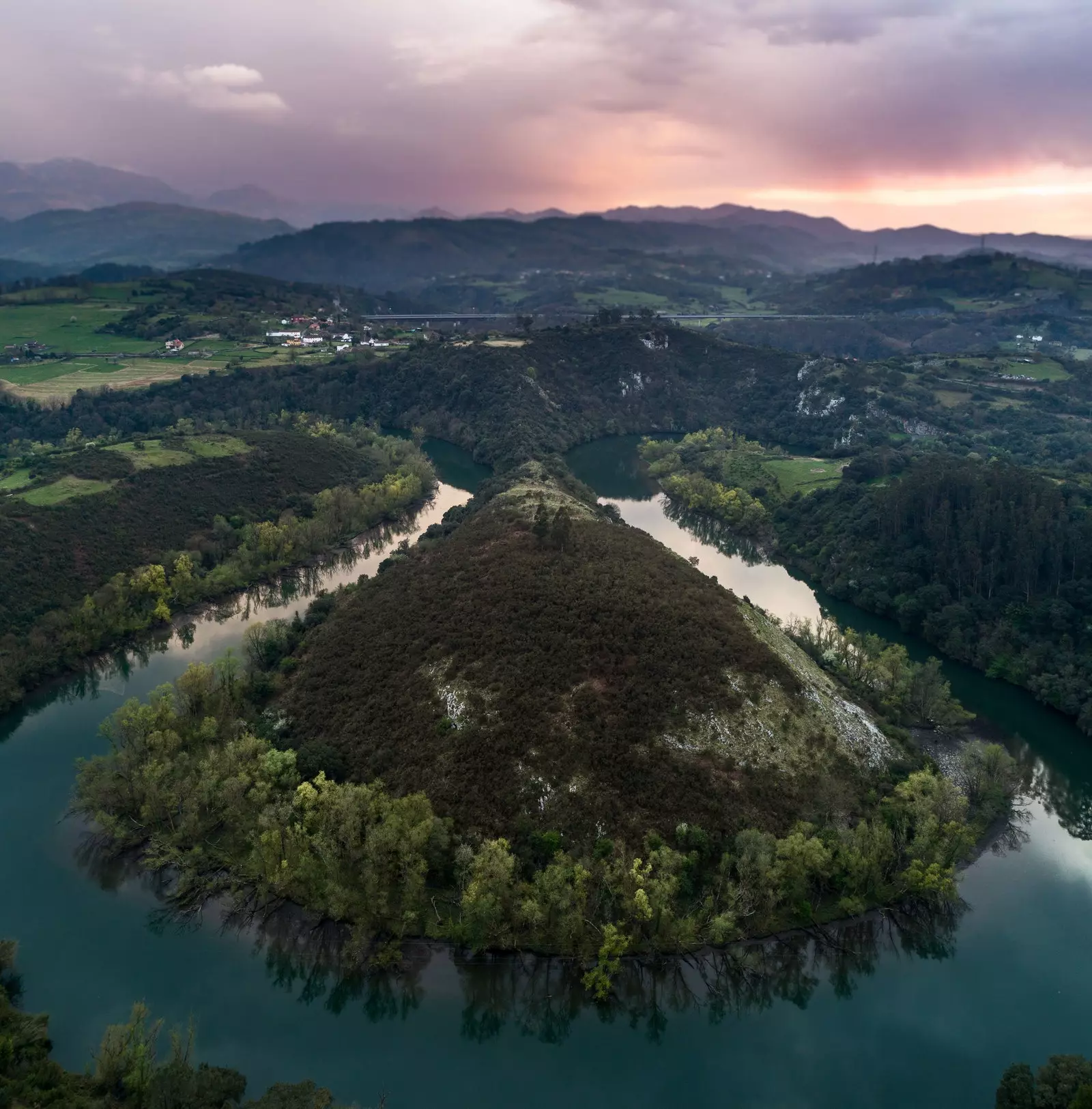
Meanders of the Nora
Also, you can explore the balance between the rural and urban environment of Oviedo with the excursion for bicycle touring Olloniego to the Cueva de la Lluera . Circular in nature and barely forty kilometres, the route intertwines the urban setting with green paths and little-used roads, and during it it is worth stopping to discover La Cueva de la Lluera, some prehistoric caves declared Asset of Cultural Interest for being the most complete outer sanctuary of Paleolithic art in Europe.
One of the greatest treasures that the Principality is the Asturian Pre-Romanesque , and Oviedo is home to various examples of this unique architectural style in the world. In 1985, six monuments of pre-Romanesque art were declared World Heritage Sites , four of which are in Oviedo. For this reason, a good way to begin to familiarize yourself with the city and its history is to begin the visit at the Mount Orange.
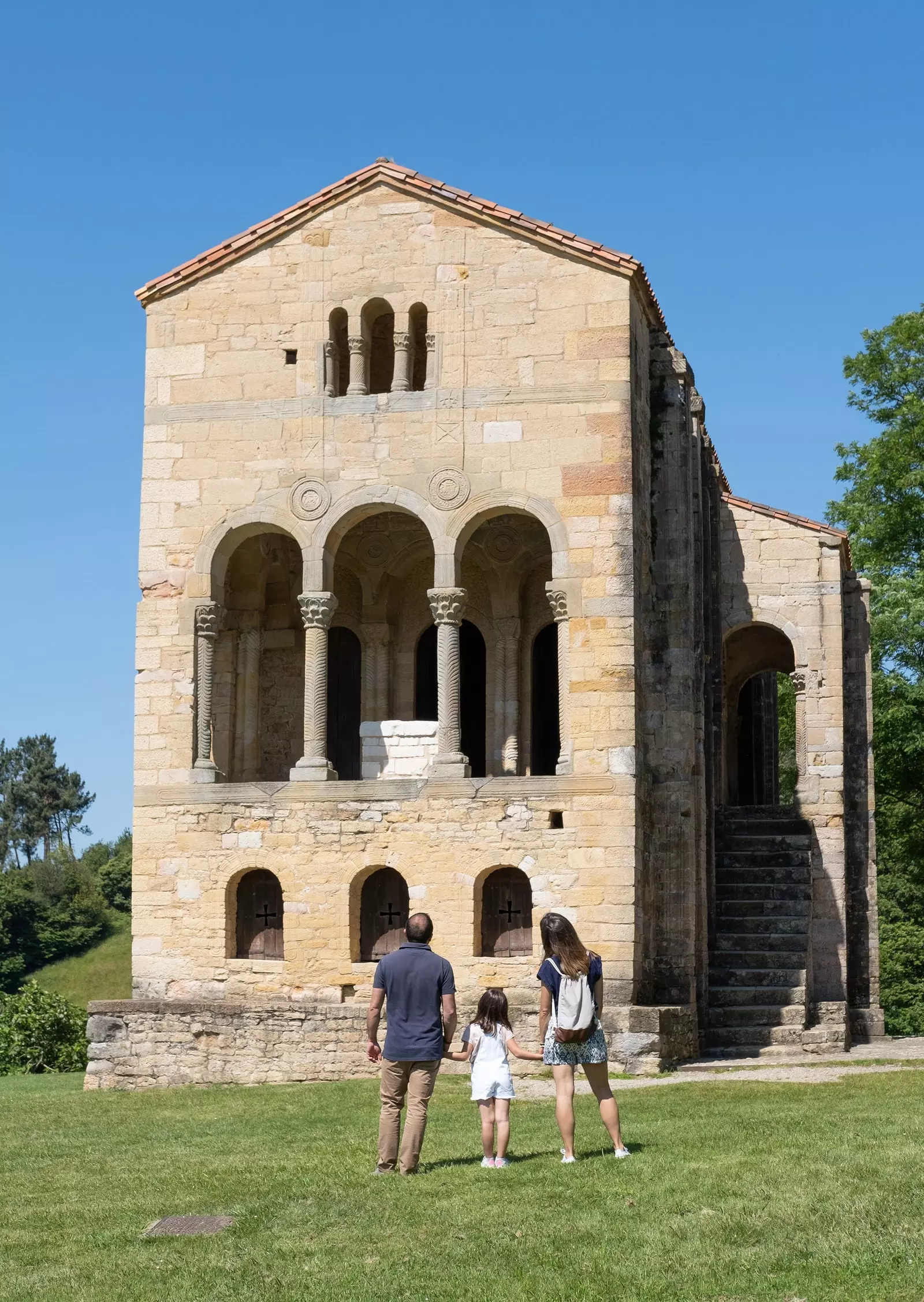
Santa Maria del Naranco
From there, in addition to enjoying a panoramic view of the entire city, you can access two Asturian pre-Romanesque references: Santa Maria del Naranco and San Miguel de Lillo . Considered by UNESCO a unique artistic achievement , this architectural style had a key influence on the development of religious architecture throughout the Iberian Peninsula.
Both buildings, built during the reign of Ramiro I in the 9th century and located just 200 meters from each other , are very well preserved and can be visited daily, in the morning and afternoon. The guided tours last approximately half an hour and in them you can discover more about these unique buildings and about the civilization that existed in the Christian Kingdom of Asturias at the time of the Caliphate of Córdoba.
Also, in the heart of the city you can visit the fountain of The Foncalada , a hydraulic engineering treasure considered as the only civil project for public utility purposes of the High Middle Ages. Finally, it is worth reserving some time for two more examples of pre-Romanesque art , located in much more central areas of the city: the Church of San Julián de los Prados , also known as santullano , because of all the buildings of this style that are preserved, Santullano is the largest and oldest (open every day except Sunday and holidays) and the Holy Chamber. Built under the reign of Alfonso II el Casto in the 9th century , is located inside the cathedral of San Salvador and it is made up of two superimposed chapels without any type of communication between them. In its entrails is the famous Victoria Cross, ensign of the Principality of Asturias..
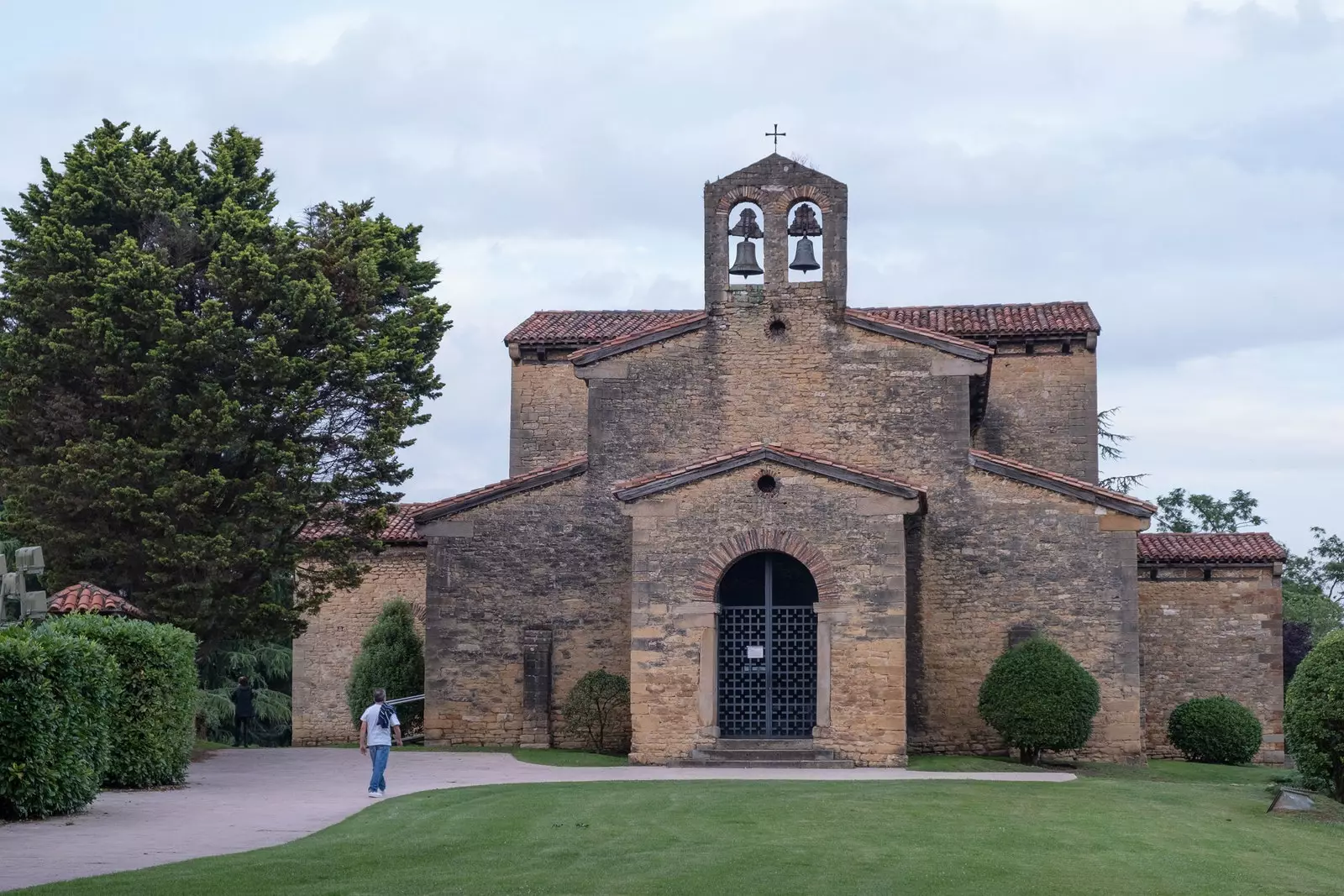
Church of San Julián de los Prados
OVIEDO: AN OUTDOOR MUSEUM
One of Oviedo's nicknames could well be the city of statues . The dozens of figures that dot the streets of the city allow you to create a tailor-made route, enjoying them as if it were an open-air museum , while at the same time discovering the city. Next Campoamor Theater , where the celebrated Princess of Asturias Awards are presented every year, is one of the most controversial and well-known statues in Oviedo, Coolies Monumentalibus , -in the popular imagination, simply the ass - and devised by artist Eduardo Urculo , who grew up in the Asturian mining basin.
In the historic Porlier square you can discover what is popularly known as The traveler -officially, The return of Williams B. Arrensberg -, by the same artist. From there, a few meters away, in the Plaza de la Catedral appears the figure of the Regent , a tribute to the protagonist of Clarín's novel sculpted by Mauro Alvarez Fernandez . This author, who wrote one of the masterpieces of Spanish literature of the 19th century, also has his own statue in San Francisco Park.
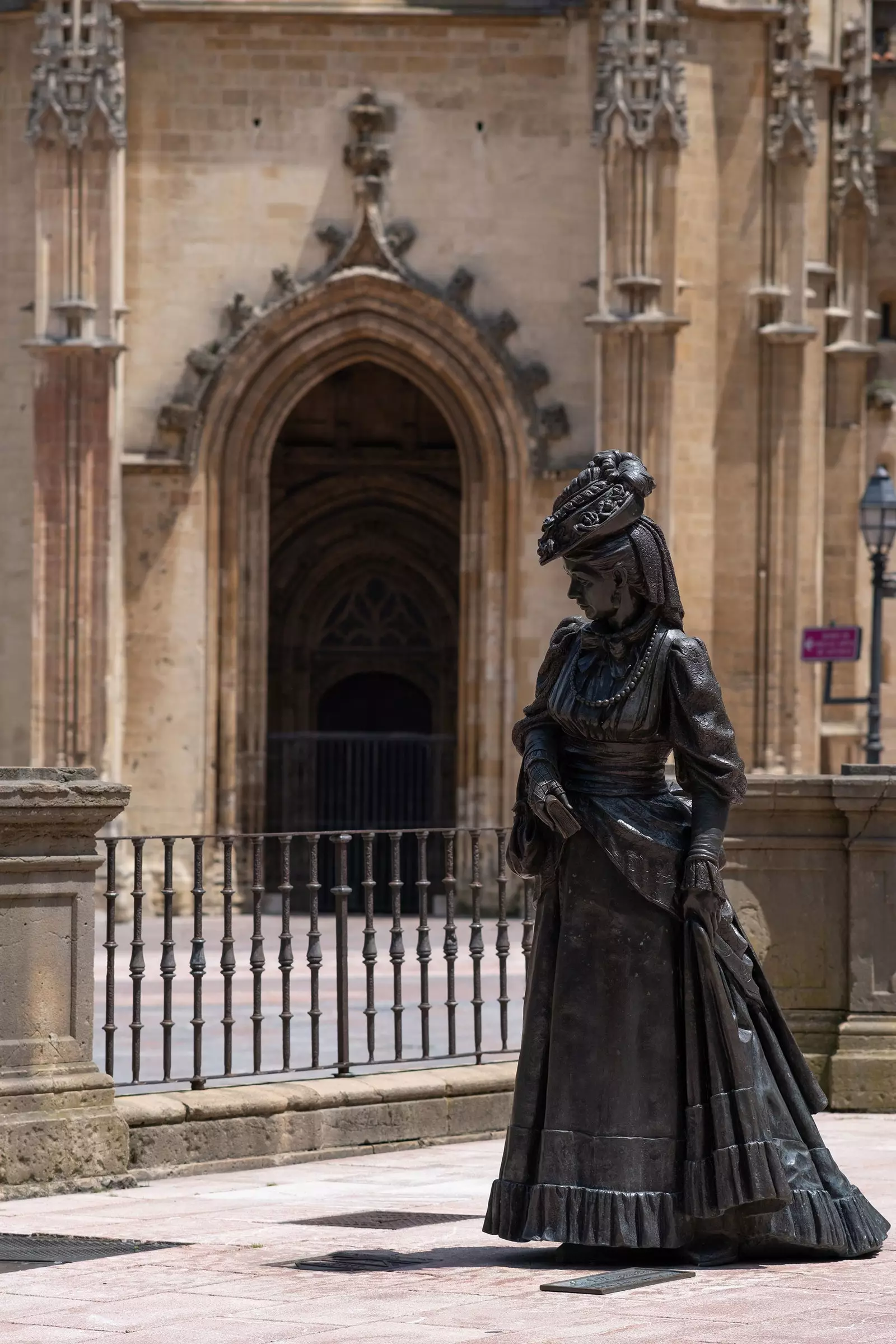
The Regent
On the other hand, the Botero's sculpture , located in the Plaza de La Escandalera and called La Maternidad , is one of the visited. Likewise, filmmaker woody allen , a self-confessed fan of the city, also has his own statue, created by Vicente Menendez Santarua . The mafalda statue , work of the Argentine artist Pablo Irrgang , appears sitting on one of the benches in the San Francisco park and is one of the favorites of the little ones.
Likewise, many of the statues found throughout the city are dedicated to ancient trades, such as that of The Milkmaid, by Manuel Garcia Linares , which is in Plaza de Trascorrales, one of the most charming squares in the city and a quiet place to stop and recharge your batteries. There is also the Fish Seller, by José Antonio Gracía Prieto . For its part, the sculpture called The Sellers of the Fontán, by Amado González Hevia , is located in the Plaza de Daoíz y Velarde, very close to the Fontán market.
Strolling through Oviedo, a welcoming, safe city -its crime rate is classified as very low- and familiar, is wonderful because in addition to the beautiful surroundings, its streets are shiny. Well Oviedo is one of the cleanest cities in Spain and a good example of this is that it has repeatedly won the Gold and Platinum Broom
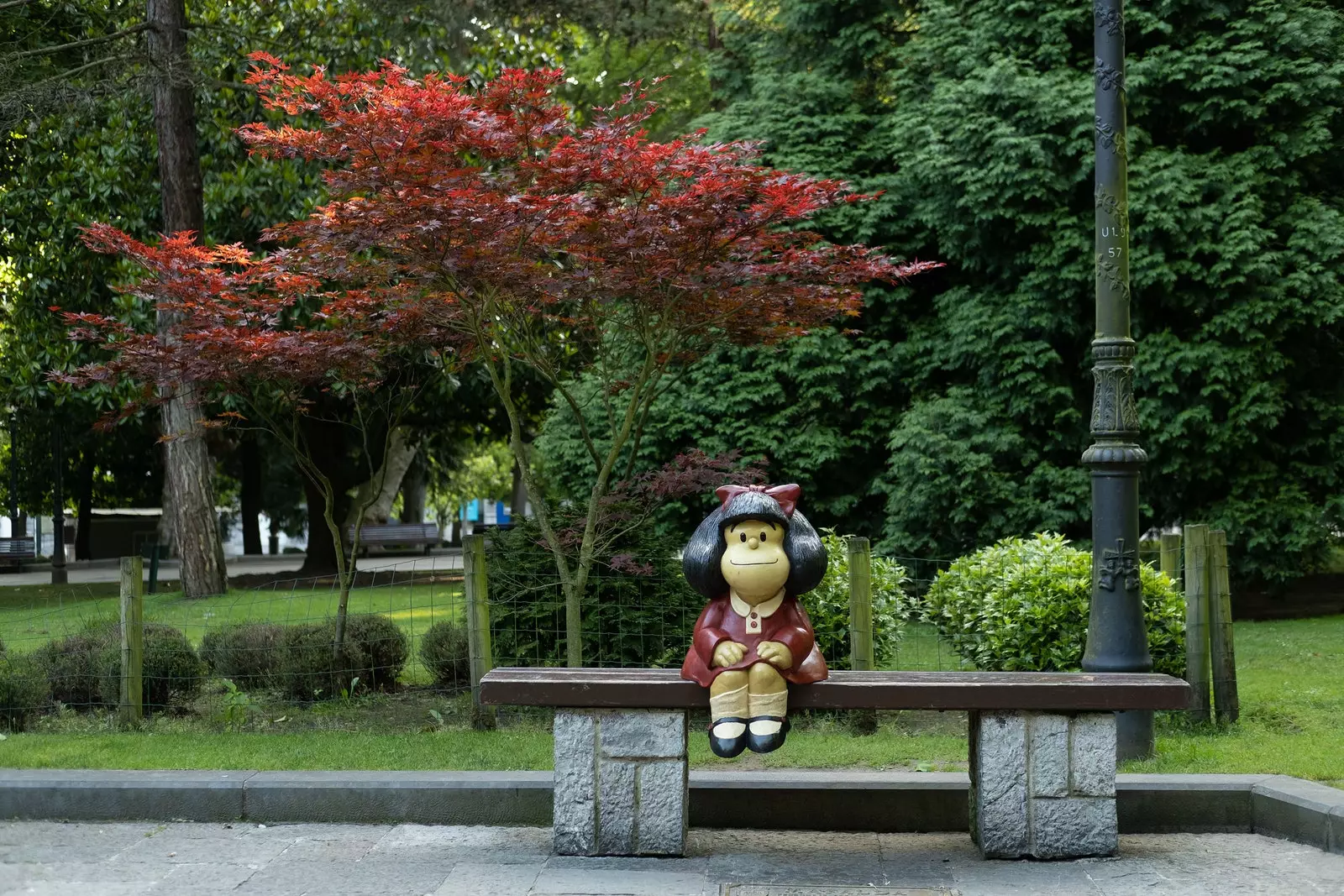
Mafalda statue by Pablo Irrgang
Throughout the city there are various sculptural references to Santiago Apóstol, from Florida avenue to Manjoya , and it is not for less, since Oviedo is the first capital of the Camino de Santiago Y starting point of the Camino Primitivo , declared a World Heritage Site by UNESCO in 2015. And precisely a commemorative plaque located at the doors of the cathedral indicates that it was from there that King Alfonso II left for Santiago, in what is considered the first pilgrimage to Compostela .
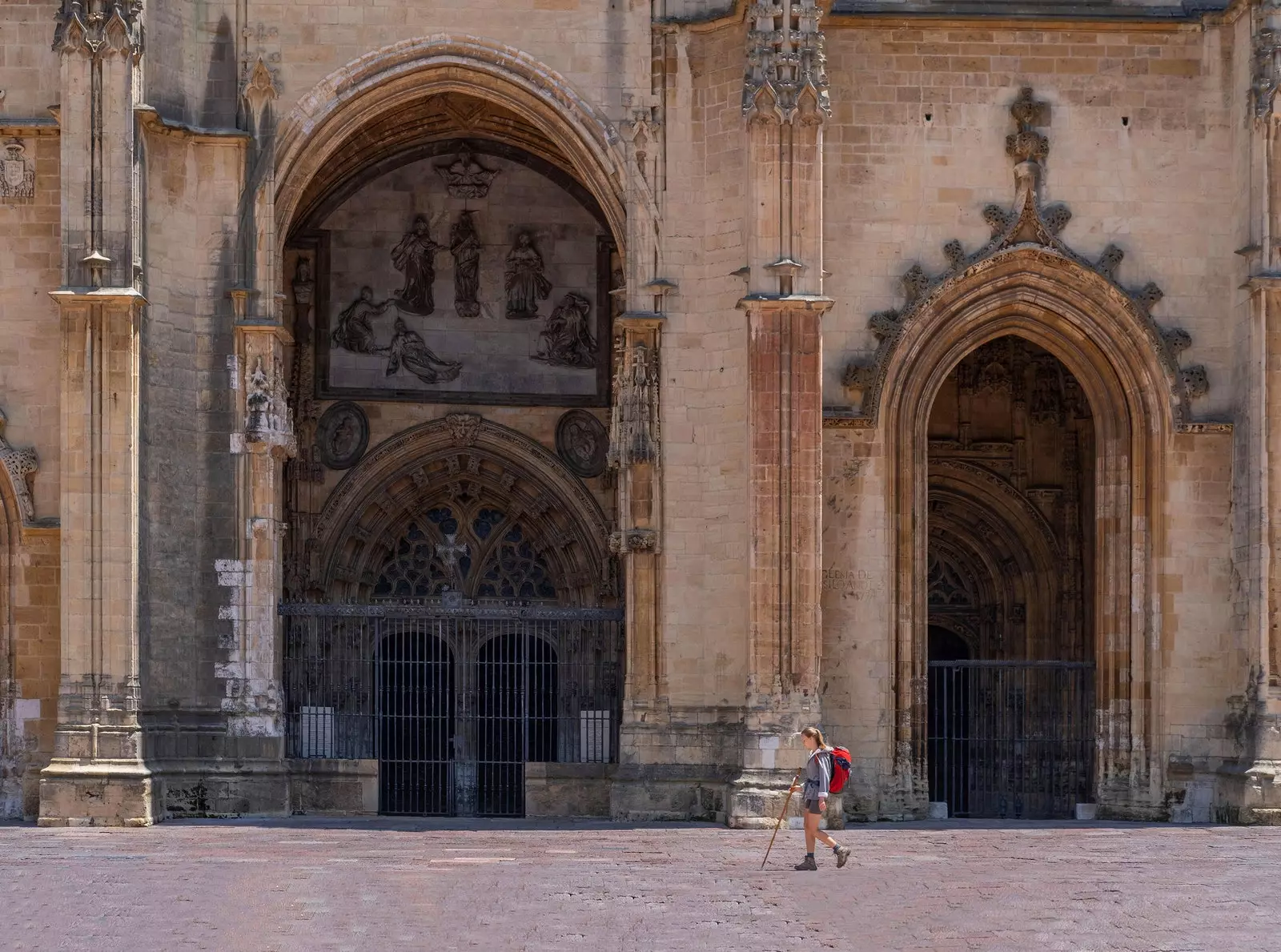
Oviedo, starting point of the Camino Primitivo
You cannot leave the city without visiting the Museum of Fine Arts of Asturias , from whose walls hang works by great Spanish masters, from Goya to Miró, passing through Picasso and Zurbarán, and which, furthermore, after its extension, the work of the Navarran architect's studio Francisco Mangado , took home the Chicago Athenaeum Award.
CULTURE FOR ALL TASTES
Oviedo is a magnet for opera lovers, which has in its Campoamor Theater his house. In September will start the 73rd season of the Oviedo Opera , with a double program starring the French composition of the 20th century, L´heure espagnole , by Maurice Ravel, and The Mamelles of Tirésias , by Francis Poulenc, which premiere for the first time at Campoamor. The Italian opera will arrive in October with I Puritan by Vincenzo Bellini, while November will be time for Lady Butterfly , Giacomo Puccini's masterpiece, and December will give way to a tribute to Beethoven, which will celebrate the 250th anniversary of his birth.
Secondly, In Oviedo, local businesses form part of the social fabric . Thus, the small business It is highly valued by the people of Oviedo. Since historical bookstores in which events are organized weekly, even small shops where you can find "everything", while walking through the streets of the city it is worth keeping your eyes wide open so as not to miss them.
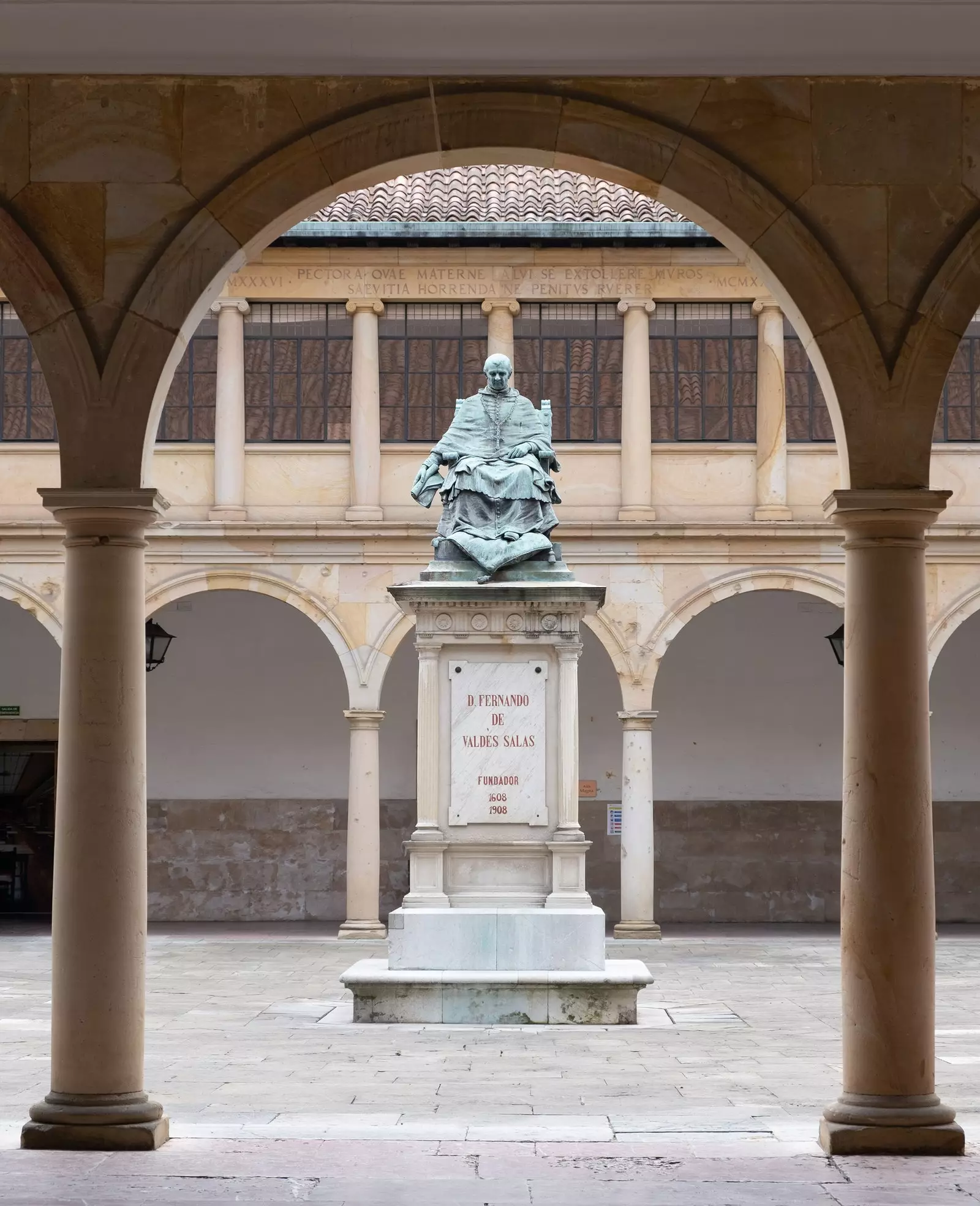
Cloister of the University of Oviedo
OVIEDO, SWEET AND SALTY
Gastronomy is not something to be taken lightly in Asturias, where eating is practically a religion . A good snack based on two of the most representative sweets of the city, the carbayones and the muscovites , is the best to regain strength. The former are a sweet almond that take the name of The Carbayon , a huge oak (carbayu in Asturian) that was located in the Uria street . The seconds, some fine almond and chocolate pastes of which it is impossible to eat only one.
Also, to whet your appetite, there is nothing like taking a walk around The Fontan the traditional market located in the heart of Oviedo and in which you can take the pulse of the city, as well as guess the main ingredients of the menus of many of the Oviedo restaurants, from the fabada to the rice with pitu caleya, the Asturian veal, the ubiquitous cachopos or the exquisite cheeses . Likewise, one of the most traditional leisure areas in the Asturian capital is located around the market, where there is always an atmosphere full of life. And of course, in Oviedo you have to enjoy the joy of the cider houses, which have their boulevard on Calle Gascona , in addition to appearing in various parts of the city, from the downtown squares to the peripheral neighborhoods. On the other hand, Oviedo has more than a dozen restaurants mentioned in the Michelin Guide both traditional and modern cuisine.
On the other hand, the one known as the wine route, an area in which, as its name indicates, there are wine cellars, is an open window to the day-to-day life of the people of Oviedo. Located in the Manuel Pedregal and Campoamor streets, very close to the central Uría street , is the perfect place to enjoy a wide range of wines, from wines from Cangas, the only wine region in Asturias, to wines from the rest of Spain and the world.
This summer the Asturian capital offers the perfect balance of culture, security, natural spaces and gastronomy which is reason enough in itself to visit the city.
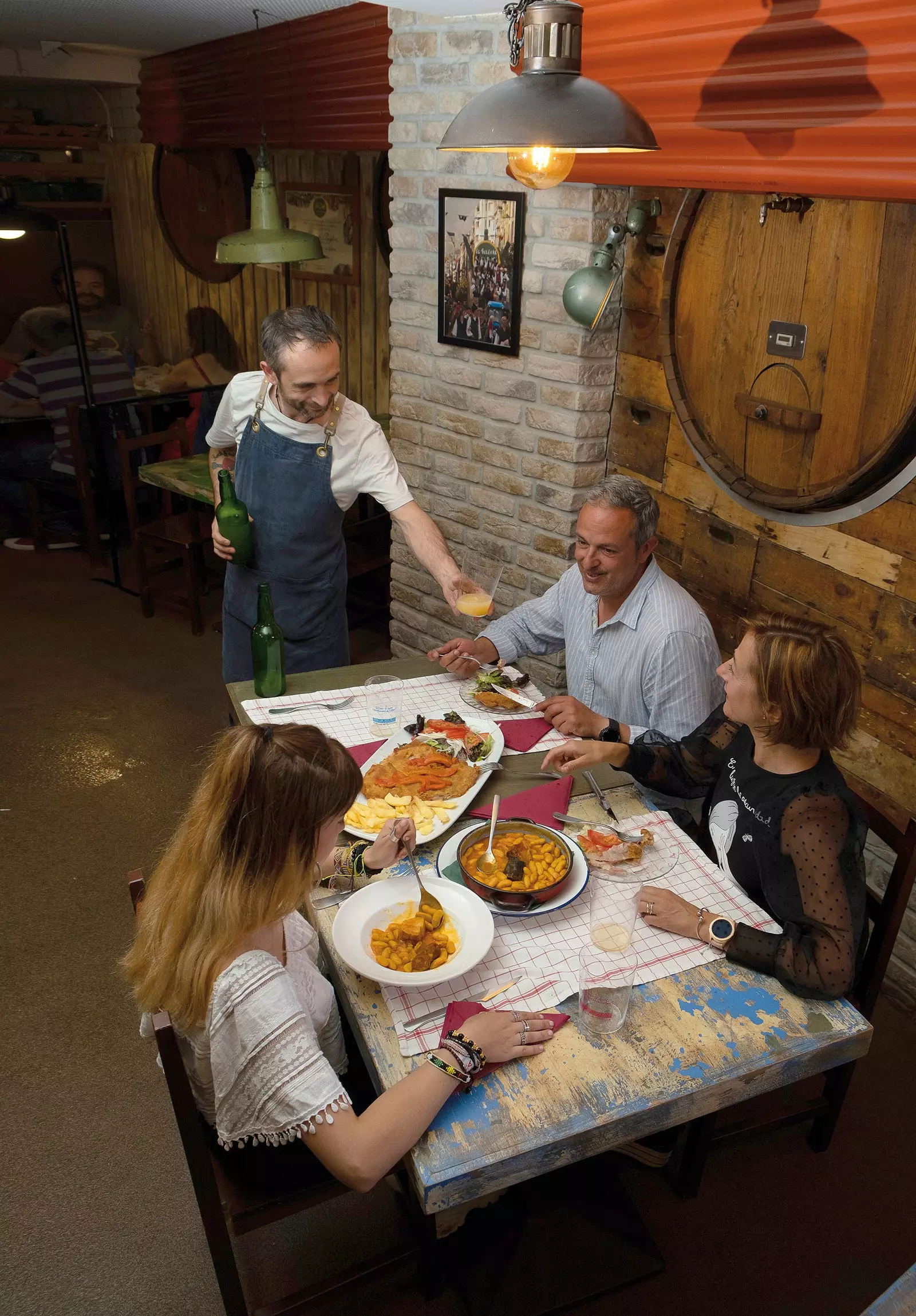
Family gastronomy in Oviedo
